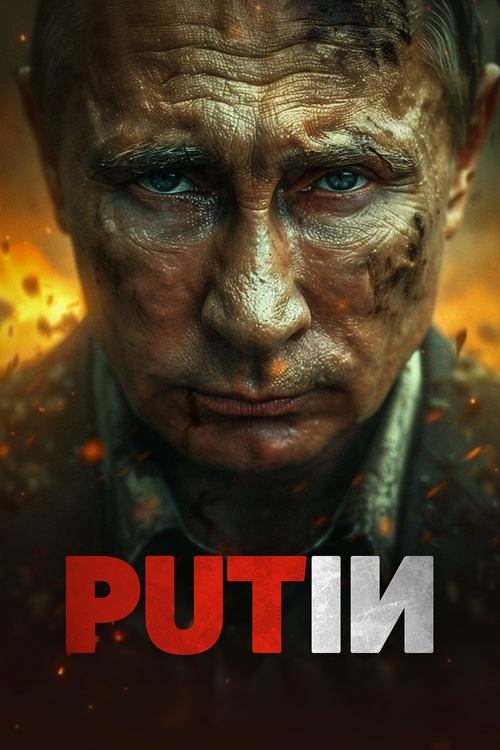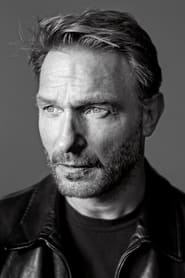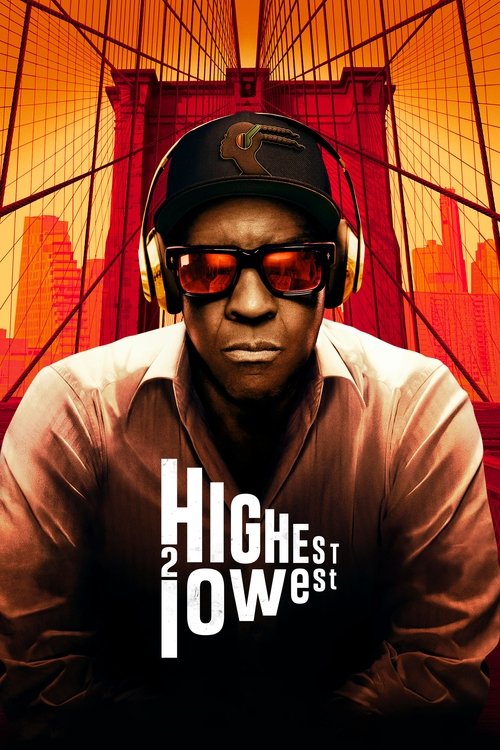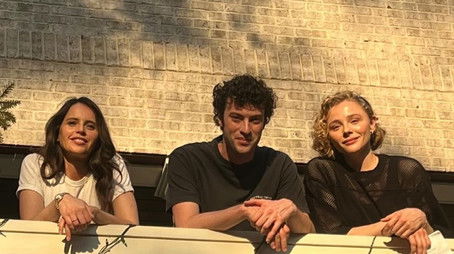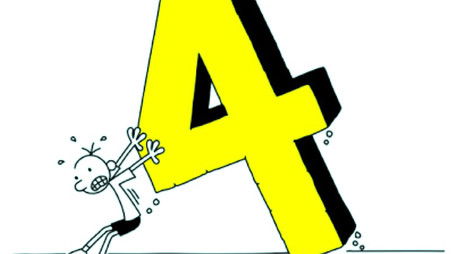
Ask Your Own Question
What is the plot?
Sorry, we aren't able to watch and write up a full detailed plot yet. Check back in a few days.
What is the ending?
The movie "Putin" (2025) ends with Vladimir Putin depicted as a broken and terrified man, physically diminished and mentally unstable, confined in a mental institution in 2026. The film closes on this image of the once-powerful dictator reduced to a vulnerable figure, symbolizing the anticipated downfall of his reign and the collapse of his iron-fisted rule.
Expanding on the ending scene by scene:
The final act opens in the near future, 2026, where Putin is shown in a stark, unsettling scene: he is sitting on the floor of a mental institution, wearing only a diaper, trembling and shaking. This visual starkly contrasts with the powerful, ruthless leader portrayed throughout the film. The setting is clinical and cold, emphasizing his loss of control and dignity. A general stands nearby, delivering news that Putin finds pleasing -- that the West is the true authoritarian force, that sanctions against Russia have backfired, and that Western societies are in decline. Despite this, Putin's physical and mental state reveals his deep fear and fragility.
The film then briefly revisits earlier moments in Putin's life, but the ending focuses on this present moment of vulnerability. The once-feared dictator, who silenced enemies and ruled with terror, is now isolated, powerless, and haunted by fear of death. His empire, which he worked to rebuild, is crumbling, and he has no allies left. The world still fears Russia but no longer respects or values it, mirroring Putin's own fall from a figure of strength to a caricature of weakness.
The fate of the main character, Vladimir Putin, is thus sealed as a tragic downfall from power to helplessness. Other key figures present at the end, such as the general, serve to underscore the shift in power dynamics and the isolation of Putin. The film does not show any other main characters' fates in detail at the conclusion, focusing tightly on Putin's personal collapse.
This ending scene encapsulates the film's central theme: the contrast between the iron-fisted tyrant and the terrified man beneath the surface. It portrays Putin not just as a ruthless leader but as a deeply fearful individual, haunted by his own mortality and the consequences of his actions. The film closes on this note of impending downfall and the fragility of power, leaving the audience with a vivid image of a once-dominant figure reduced to a state of vulnerability and fear.
Is there a post-credit scene?
Based on available sources, there is no evidence that the 2025 Polish film Putin, directed by Patryk Vega, contains a post-credit scene. The film's synopsis and coverage focus on its main narrative arc--spanning Vladimir Putin's childhood, KGB career, rise to power, and a fictionalized depiction of his death--but make no mention of any additional content after the credits.
If you are referring to a different film titled Putin produced in 2025, please clarify, as no other major production matching this description has been documented in the provided sources. For the Patryk Vega film, the story concludes with the fictional death of Putin, and there is no indication of a post-credit sequence extending or commenting on the narrative.
What are the key events depicted from Putin's early life in the movie?
The movie portrays Vladimir Putin's early life starting from his childhood when he was abandoned by his mother, through his adolescent years where he was bullied, and his early career in the KGB. These scenes aim to provide insight into the formative experiences that shaped his character and ambitions.
How does the film depict Putin's rise to power?
Putin's rise to power is shown through a series of non-linear flashbacks highlighting his dealings with gangsters in St. Petersburg, his ruthless political maneuvers, and the silencing of his enemies. The film emphasizes his transformation into an iron-fisted tyrant who rebuilds the Russian Empire and instills fear both domestically and internationally.
Which characters besides Putin are prominently featured and what roles do they play?
Besides Putin, the film features characters such as a general who delivers news to Putin in a mental institute setting, and various figures from his past including gangsters and political adversaries. These characters serve to illustrate the power dynamics around Putin and the isolation he experiences as he consolidates control.
How is Putin's psychological state portrayed throughout the movie?
The film portrays Putin as a man haunted by fear and paranoia, especially in the later stages where he is shown as a quivering figure in a mental institute. This depiction contrasts his public image as a formidable dictator, revealing internal vulnerabilities and the psychological toll of his reign.
What specific historical or political events are dramatized in the movie?
The movie dramatizes key events such as Putin's work in the KGB, his interactions with criminal elements in St. Petersburg, the rebuilding of the Russian Empire, and the war in Ukraine. It also projects into the near future, showing the anticipated downfall of Putin around 2026, reflecting on the global impact of his leadership and the sanctions imposed on Russia.
Is this family friendly?
The 2025 movie "Putin" is not family friendly and is rated R primarily for violent content and brief drug use. It contains moderate violence and gore, including scenes depicting political ruthlessness and murder, which may be upsetting for children or sensitive viewers. There is no sexual content or nudity, but the film's tone is dark, with a focus on the brutal and sadistic aspects of Vladimir Putin's rise to power.
Potentially objectionable or upsetting aspects include:
- Violent scenes with blood and political brutality.
- Brief depiction of drug use.
- A generally dark, intense, and psychologically disturbing portrayal of a ruthless political figure.
- The film's non-linear, chaotic timeline and heavy political themes may be confusing or distressing for younger audiences.
Overall, the film is intended for mature audiences interested in political drama and biographical thrillers, and it is unsuitable for children or those sensitive to violence and intense political content.

